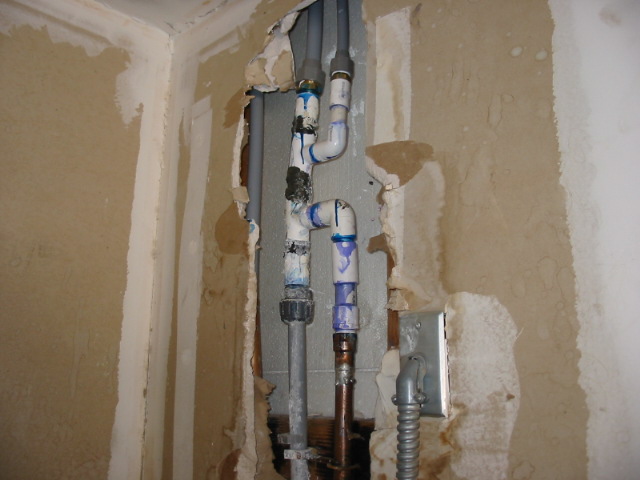Polybutylene piping

Polybutylene is a form of plastic resin water supply plumbing pipe that was used extensively in homes built between 1978 and 1995. This pipe was used as a cost savings device for builders as it was much cheaper than copper and installation time much faster.
The first problems showed up quickly with connection devices which was faulted by improper installation. The industry responded with a plastic connector which also had rapid and widespread failure. The industry in the early 1990’s came out with the improved metal band type connection which proved to be a more reliable fitting but by then other problems developed. It is believed that oxidants in the water react with the piping and fittings causing further failures. There were also some wear problems due to pipe movement from expansion and contraction as well as water hammer or pipe movement when the water is turned on and off. This movement caused additional problems with the fittings and wear problems started a new series of leaks associated with the polybutylene piping.
The most common home piping used in southern Arizona was a grayish blue pipe made by Vanguard piping a division of Shell oil Company. In 1995 Vanguard and other manufactures came out with a new plumbing system called PEX or polyetheylene. This piping has a frosted clear look or can be in colors such as red and blue. To this date this piping is performing well with isolated problems due to installation problems.
There was an exterior water service piping commonly referred to as big blue, a bluish color pipe which has a very high failure rate where tree roots are located. There is now a PEX pipe used for the service which at this time is performing well.
The main question now is what kind of piping do I have and does it need to be replaced. First of all, piping identification can be difficult. For the most part polybutylene piping is not run in the slab and if a two story house not run in the attic. The system is run in the ceiling in a chase or ceiling Sheetrock enclosure which typically does not have an access. Because this type of piping and many other types stub out of the wall with a copper fitting identification can be tough. The inspector may be able to find a visible connection or use other means to identify it and just because the house was built in 1996 is no guarantee as may projects were started and not finished until then. If your inspector can not identify the type of pipe a plumbin g contractor can come out and cut an access hole for positive identification.
g contractor can come out and cut an access hole for positive identification.
Do I need to replace it? That is a good question, one school of thought is that most leak occurred in the first few years but that does not account for the wear and material problems noted earlier. The other problem is that some buyers just don’t want a house that has it and that may be a problem when trying to sell the home. As far as replacement costs go expect in the area of $3000 to $5000 for a replacement depending on size, access and how much patching is needed.
Talk to your inspector at the time of inspection for more information and recommendations on what should be done.
